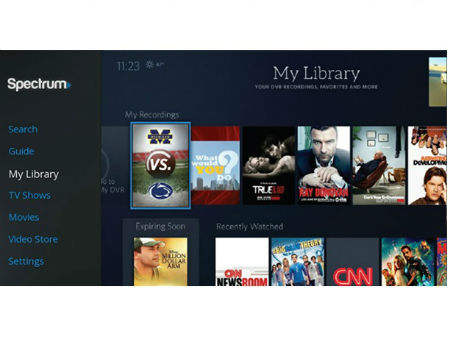Charter Mulling Speed of Cloud UI Rollout

Confident that the bugs have been worked out and it has a scalable platform on its hands, Charter Communications is now weighing where and how rapidly it will deploy Spectrum Guide, its new cloud-based interface, across its legacy footprint.
“We’re rolling it out now and we have the ability to roll it out inside our own footprint this year, meaning the existing footprint,” Tom Rutledge, Charter’s president and CEO, said Thursday during the company’s Q4 earnings call, noting that it will of course take longer to get it in front of customers that would come way of Charter’s proposed acquisitions of Time Warner Cable and Bright House Networks. “Assuming we close sometime in the near future on those companies, we’re not going to get them completely rolled out this fiscal year but I think we can begin the process by the end of this year.”
Charter has launched Spectrum Guide in Fort Worth, Texas; and Reno, Nev. It can run on Charter’s new Worldbox, an IP-capable device that features a downloadable security platform, as well as the vast majority of its legacy, MPEG/QAM-only set-top – which number about 10 million -- thanks to a cloud-based deliver system from ActiveVideo, the vendor now co-owned by Charter and Arris.
Charter, he said, is still deciding how rapidly it will deploy Spectrum Guide in its existing systems -- whether to roll it out to all outlets en masse, or phase it in incrementally to just new customers and make it optional for current customers.
“We’re still wrestling with the right roll-out strategy,” he said. “But operationally it works very well and it's capable of being fully deployed."
Rutledge also talked up the potential for Charter’s new platform to support OTT services and cross-platform search.
“It turns every TV into a connected smart TV and allows us to integrate third party video services including over-the-top providers like YouTube, Netflix, Hulu and Amazon Prime, giving customers the ability to search and view all of the content they’re interested in without changing consumer-owned hardware or devices,” he said, adding that the new guide is also being designed to support dynamic ad insertion. (UPC Hungary, a unit of Liberty Global, is using ActiveVideo's CloudTV StreamCast tech to offer YouTube and other apps on non-IP set-tops). .
Multichannel Newsletter
The smarter way to stay on top of the multichannel video marketplace. Sign up below.
Cross-platform search, he said, would be consumer-friendly, but acknowledged that some business issues need to be ironed out first.
“The vast majority of our customers subscribe to us and over-the-top services,” he said. “We want our customers to be fully satisfied in their video experience and have that be as seamless an experience as possible.”
Rutledge was non-committal on DOCSIS 3.1, an emerging multi-gigabit IP platform that Comcast plans to deploy this year in a handful of markets. The first batch of modems based on D3.1 were recently certified by CableLabs.
“We didn’t specifically plan for it [DOCSIS 3.1] in legacy Charter in this fiscal year,” he said. But he expects the technology powering D3.1 to become available at “commercially deployable pricing” within the next 18 months. “We expect that we will begin the transition in the new company over that time frame."
Charter is also taking a wait-and-see attitude with the FCC’s proposed set-top rules.
“We haven't seen the proposal yet…fully, but we think it's a very dynamic marketplace and that the business is moving toward app-based display and cloud-based display. We’ll want to work carefully with the FCC as they attempt to change the marketplace as it currently exists.”
